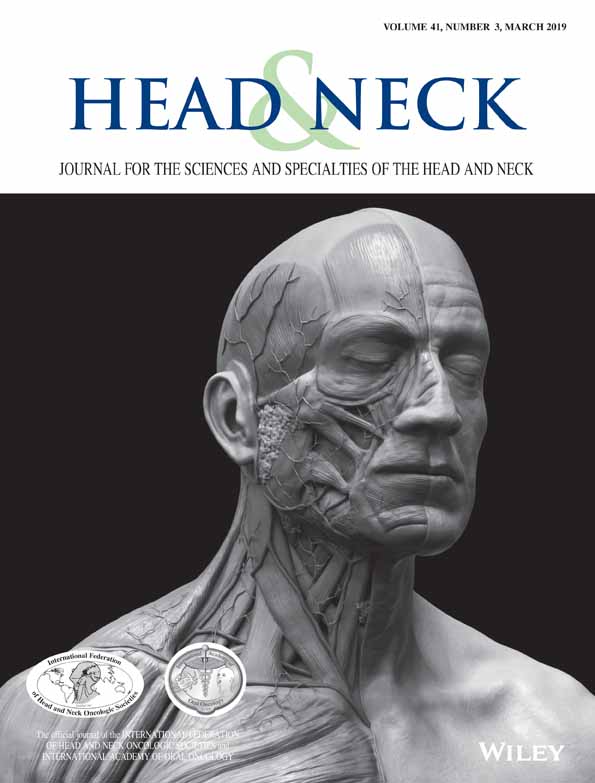Influence of comorbidity on therapeutic decision making and impact on outcomes in patients with head and neck squamous cell cancers: Results from a prospective cohort study
Abstract
Background
High prevalence of comorbidity in head and neck squamous cell carcinoma (HNSCC) often lead to suboptimal treatment. The presence study aims to evaluate the presence of comorbidity, its impact on therapeutic decision making, treatment compliance, and overall survival in HNSCC.
Methods
Five hundred eighteen patients with nonmetastatic HNSCC, elder than 18 years of age, without any prior history of cancer or anticancer treatment in the last 5 years were evaluated using Adult Comorbidity Evaluation 27 (ACE 27) index.
Results
Two hundred ninety three (56.6%) patients had comorbidity, and 20.6% had deviation from the ideal treatment plan. Higher grade of comorbidity led to less likely completion of guideline-concordant therapy (moderate ACE 27 vs none: odds ratio [OR] 0.46, 95% confidence interval [CI] 0.26-0.82, P < .01*; severe ACE 27 vs none: OR 0.23, 95% CI 0.08-0.57, P < .01*). Patients who completed guideline-concordant treatment had the best outcomes as compared to those who could not (median survival: not reached vs 9.56 months, hazard ratio 3.66, 95% CI: 2.8-4.79; P < .01*).
Conclusion
Presence of increasing severity of comorbidity in HNSCC influences therapeutic decision making. Survival outcomes are poorer in patients receiving guideline-discordant treatment.
CONFLICT OF INTEREST
None declared.




